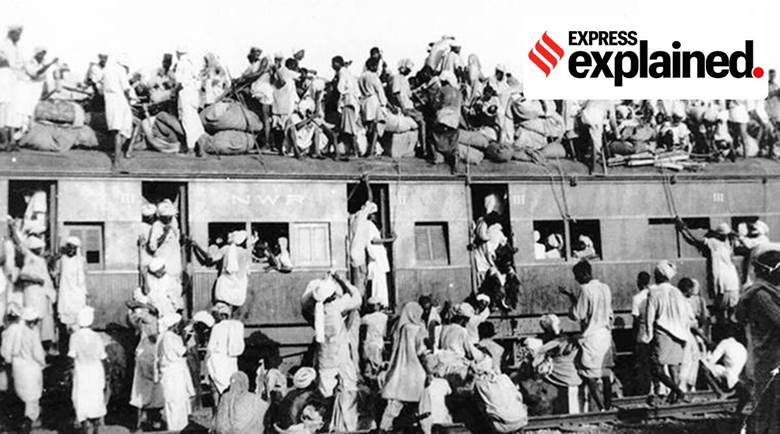Description

Copyright infringement is not intended
Context: India is commemorating August 14, as Partition Horrors Remembrance Day. The commemoration was announced by Prime Minister on this date last year. In a tweet, he had said that “Partition’s pain can never be forgotten. Millions of our sisters and brothers were displaced and many lost their lives due to mindless hate and violence”, and that the day would be marked “in memory of the struggles and sacrifices of our people”.
What horrors came with the Partition of India?
- The partition of India into India and Pakistan led to grave violence and communal riots, loss of property, and extreme upheaval in the weeks and months around August 15, 1947.
- The Partition is acknowledged as one of the most violent and abrupt displacements in the recent history of the world.
- An official document released by the government to mark Partition Horrors Remembrance Day says: “More than being a story of a violent divide based on faith and religion it is also a story of how a way of life and ages of co-existence came to a sudden and dramatic end.” Estimates of the numbers of those killed vary; according to the official document, it could be between 500,000 to over a million, but “the generally accepted figure stands at around 500,000”.
What were the political developments leading up to Partition?
- The NCERT’s history textbook notes that the Muslim League led by Mohammad Ali Jinnah, who was a chief advocate for the demand for Pakistan, came to be a powerful party rather late; it had not been very successful in the elections it contested earlier, like in 1937.
- In fact, the demand for Pakistan, meaning a separate country for Muslims, was not a strong one for a long time.
- The Muslim League moved a resolution in Lahore demanding a measure of autonomy for the Muslim-majority areas only in 1940. But in less than a decade, it gained prominence.
- Among those who raised the demand first was the Urdu poet Mohammad Iqbal, the writer of “Saare Jahan Se Achchha Hindustan Hamara”.
- A few years after writing the song about unity beyond religion, Iqbal drastically changed his views. In his presidential address to the Muslim League in 1930, he spoke of a need for a “NorthWest Indian Muslim state”.
- There is also the popular theory that the Muslim League mostly put forward the demand for partition to bargain for greater power in independent India, given Congress’s dominance.
- Many also believe the partition of India could have been prevented, and blame the leadership of the Congress — mainly Gandhi and Nehru — for allowing the country to be torn apart on the basis of religion.
- However, there are no simple answers to complex questions of history. A series of developments contributed to the creation of the conditions for Partition.

Why did Partition result in such large-scale violence?
- Britain was in a hurry to leave India in the aftermath of World War II when its own condition was not strong.
- Lord Mountbatten, the governor-general at the time, was supposed to work out the independence of India by June 1948, but he chose to advance the date, apparently because he was keen to return to Britain sooner.
- A barrister called Cyril Radcliffe was given the task of redrawing the boundaries of the two new nations, even though he had never visited India before then. The lack of planning, administrative flux, and massive communal rioting and disturbances created the horrors of Partition.
- As per the government’s document, about 6 million non-Muslims moved out from what became West Pakistan, and 6.5 million Muslims moved out from the Indian part of Punjab, Delhi, etc., into West Pakistan.
- An estimated 2 million non-Muslims moved out of East Bengal (Pakistan) and later in 1950 another 2 million non-Muslims moved into West (India) Bengal. It is estimated that about one million Muslims moved out of West Bengal, according to the document.
- The loss of property, massacres, and re-settlement, were major challenges for the two countries that lacked basic systems after more than a hundred years of colonisation. Trains laden with corpses, cramped and unsafe refugee camps, and women being the victims of gender-based violence became the common sights of the time in many areas of north and east India.
https://indianexpress.com/article/explained/explained-india-commemorating-partition-horrors-remembrance-day-august-14-8088961/







